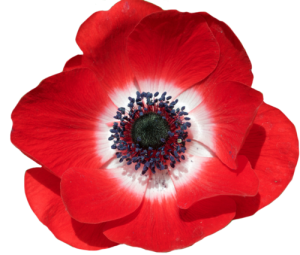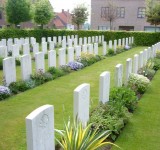Personal Details
George was born in Whitchurch in 1882, the eldest son of Thomas and Elizabeth Speakes.
Husband of Sarah Ann (nee Fowles) Speakes of 2, Grooms Yard, Watergate Street, Whitchurch, father of George, Frank and Frederick.
George worked as a Farm Labourer before enlisting in early 1915, landing in France on 28th September 1915.
Military Details
Regiment : 7th (Service) Battalion King’s Shropshire Light Infantry
Rank : Private
Service Number : 16559
Killed in Action; Belgium 29th April 1916 Age 35

The 1914 Star (also known as 'Pip') was authorised under Special Army Order no. 350 in November 1917 and by an Admiralty Fleet Order in 1918, for award to officers and men of the British and Indian Expeditionary Forces who served in France or Belgium between 5 August and midnight of 22–23 November 1914. The former date is the day after Britain's declaration of war against the Central Powers, and the closing date marks the end of the First Battle of Ypres.
The 1914–15 Star (also known as 'Pip') was instituted in December 1918 and was awarded to officers and men of British and Imperial forces who served against the Central European Powers in any theatre of the Great War between 5 August 1914 and 31 December 1915. The period of eligibility was prior to the introduction of the Military Service Act 1916, which instituted conscription in Britain.
The British War Medal (also known as 'Squeak') was a silver or bronze medal awarded to officers and men of the British and Imperial Forces who either entered a theatre of war or entered service overseas between 5th August 1914 and 11th November 1918 inclusive. This was later extended to services in Russia, Siberia and some other areas in 1919 and 1920. Approximately 6.5 million British War Medals were issued. Approximately 6.4 million of these were the silver versions of this medal. Around 110,000 of a bronze version were issued mainly to Chinese, Maltese and Indian Labour Corps. The front (obv or obverse) of the medal depicts the head of George V. The recipient's service number, rank, name and unit was impressed on the rim.
The Allied Victory Medal (also known as 'Wilfred') was issued by each of the allies. It was decided that each of the allies should each issue their own bronze victory medal with a similar design, similar equivalent wording and identical ribbon. The British medal was designed by W. McMillan. The front depicts a winged classical figure representing victory. Approximately 5.7 million victory medals were issued. Interestingly, eligibility for this medal was more restrictive and not everyone who received the British War Medal ('Squeak') also received the Victory Medal ('Wilfred'). However, in general, all recipients of 'Wilfred' also received 'Squeak' and all recipients of The 1914 Star or The 1914/1915 Star (also known as 'Pip') also received both 'Squeak' and 'Wilfred'. The recipient's service number, rank, name and unit was impressed on the rim.
Further Information
Report in the Wellington Journal & Shrewsbury News April 1916. A letter from the Chaplain to Mrs Speakes on the death of her husband, George Speakes.
“Dear Mrs Speaks, It is with great sympathy that I write to you about your husband, Private George Speaks, who was unfortunately killed during the shelling on the Brigade Headquarters. The Brigade had just moved into their new quarters when the Germans opened fire, and your husband and five others were killed. I know what a sad blow it must be to you , and I want to offer you my very real sympathy in your great sorrow, It may be some comfort to you to know that he can not have felt any pain, he was killed instantly. We buried him in a little churchyard by the side of his comrades, who gave their lives for their country on that unhappy morning. Many of his friends and officers were there, and we laid him to rest as nicely as we could, a white wooden cross marks his grave. All ranks, Brigadier, Staff, and men of the Brigade wish to join with me in expressing our very sincere and lasting sympathy with you in the sacrifice which you have made.”
Wellington Journal & Shrewsbury News April 1916
If you can provide any further information on George Speakes please get in touch by leaving a comment below, using our Contact Form or by calling in to Whitchurch Heritage Centre.
Information provided by Terry Evanson Whitchurch, Shropshire and Whitchurch Museum and Archives


